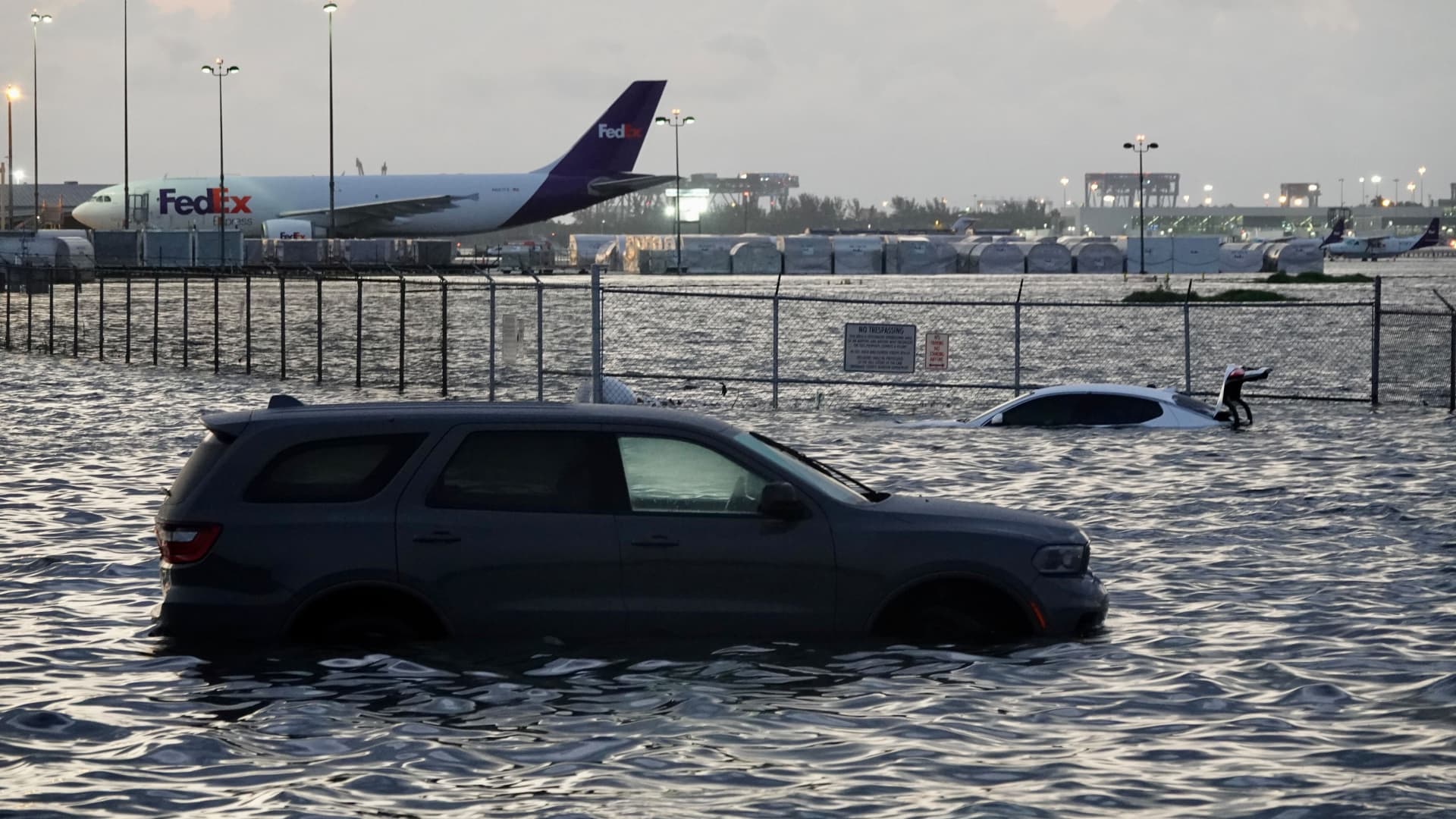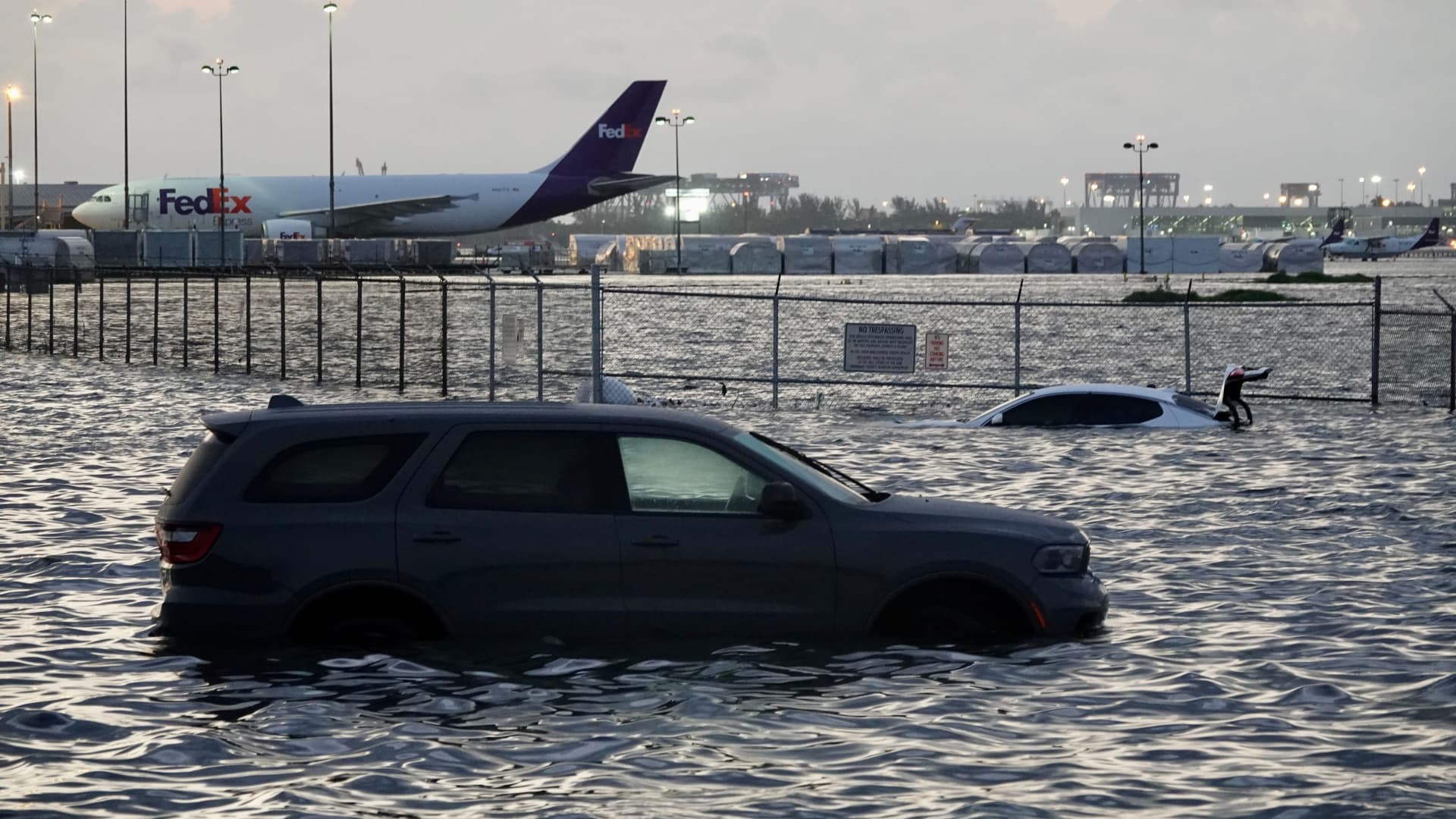The United States is confronting an escalating crisis as climate change increasingly threatens its infrastructure. From extreme weather events to rising sea levels, the nation’s roads, bridges, energy systems, and water supplies are under siege. The consequences of inaction are severe, with potential economic collapse, widespread displacement, and a decline in quality of life for millions. This report explores the multifaceted impacts of climate change on U.S. infrastructure, identifies the most vulnerable areas, and examines potential solutions to mitigate these growing threats.
The Climate Culprits: A Multifaceted Assault
Climate change is not a singular threat but a complex interplay of interconnected phenomena, each posing unique risks to U.S. infrastructure. Several key factors are exacerbating these risks:
Extreme Weather Events
The frequency and intensity of extreme weather events, such as hurricanes, floods, droughts, and wildfires, are rising. These events directly damage infrastructure, overwhelming drainage systems, eroding coastlines, and causing widespread destruction. For instance, increased rainfall can lead to flash floods, overwhelming existing infrastructure. The National Oceanic and Atmospheric Administration (NOAA) reports that the U.S. has experienced a significant increase in billion-dollar weather and climate disasters over the past decade, with an average of 18 such events per year between 2016 and 2020, compared to just 6 per year in the 1980s.
Sea Level Rise
Rising sea levels pose an existential threat to coastal infrastructure. Tidal flooding is becoming more frequent and severe, inundating roads, bridges, and vital facilities. Saltwater intrusion contaminates freshwater sources and accelerates the corrosion of underground infrastructure. The Union of Concerned Scientists estimates that by 2050, up to 670 coastal communities in the U.S. could experience chronic inundation, displacing millions of people and damaging critical infrastructure.
Heatwaves
Prolonged periods of extreme heat can buckle roads and railways, strain power grids, and damage airport runways. The increased demand for electricity during heatwaves further strains the energy infrastructure, leading to blackouts and brownouts. The U.S. Global Change Research Program reports that heatwaves are becoming more frequent and intense, with the number of heatwave days in the U.S. projected to double by the end of the century.
Droughts
Prolonged droughts can lead to water shortages, impacting water infrastructure and agriculture. The lack of water can also increase the risk of wildfires, which can damage power lines, pipelines, and other critical infrastructure. The U.S. Drought Monitor indicates that drought conditions have affected large portions of the U.S. in recent years, with the Western U.S. experiencing some of the most severe droughts in history.
These climatic changes act as “threat multipliers,” exacerbating existing vulnerabilities and pushing infrastructure systems beyond their designed capacity.
Infrastructure on the Front Lines: Key Areas at Risk
The vulnerability of U.S. infrastructure varies depending on geographic location and the type of infrastructure in question. Certain sectors and regions are facing particularly acute risks:
Energy Infrastructure
The energy sector is highly vulnerable to climate change. Power plants are susceptible to flooding, extreme heat, and disruptions from wildfires. Transmission lines are vulnerable to high winds and ice storms. Changes in water availability can also impact hydropower generation and the cooling of thermal power plants. The U.S. Department of Energy estimates that climate change could cost the energy sector up to $180 billion annually by the end of the century if no action is taken.
Transportation Infrastructure
Roads, bridges, railways, and airports are all susceptible to climate-related damage. Extreme heat can buckle roads and railways, while flooding can wash out bridges and runways. Sea level rise threatens coastal transportation infrastructure, including ports and harbors. The American Society of Civil Engineers gives the U.S. a grade of C- for its infrastructure, highlighting the urgent need for investment and modernization to address these risks.
Water Infrastructure
Water treatment plants, pipelines, and reservoirs are vulnerable to drought, flooding, and saltwater intrusion. Aging water infrastructure is particularly susceptible to leaks and breaks, exacerbating water shortages during droughts. The Environmental Protection Agency estimates that the U.S. needs to invest $472.6 billion over the next 20 years to maintain and improve its water infrastructure.
Coastal Infrastructure
Coastal communities are facing the most immediate and severe threats from climate change. Sea level rise and increased storm surge are inundating coastal infrastructure, including roads, bridges, and buildings. Coastal erosion is also threatening homes, businesses, and critical infrastructure. The National Oceanic and Atmospheric Administration projects that by 2100, global sea levels could rise by up to 8 feet, displacing millions of people and causing trillions of dollars in damage.
The Financial Fallout: A Looming Economic Crisis
The damage to infrastructure caused by climate change is already costing the U.S. billions of dollars each year. As climate change intensifies, these costs are projected to escalate dramatically. The financial implications are far-reaching:
Increased Repair and Replacement Costs
The need to repair and replace damaged infrastructure will place a significant strain on federal, state, and local budgets. The American Society of Civil Engineers estimates that the U.S. needs to invest $2.6 trillion by 2029 to address its infrastructure deficit, with climate change exacerbating these costs.
Disrupted Economic Activity
Damage to transportation and energy infrastructure can disrupt supply chains and hinder economic activity. Power outages can shut down businesses and factories, leading to lost productivity and revenue. The National Bureau of Economic Research estimates that climate-related disasters can reduce GDP growth by up to 0.5% annually.
Declining Property Values
Properties in areas vulnerable to climate change, such as coastal communities, may experience declining property values, impacting homeowners and local tax revenues. The Federal Reserve Bank of San Francisco estimates that climate change could reduce property values in coastal areas by up to 10% by 2050.
Increased Insurance Costs
Insurance companies are already raising premiums in areas prone to climate-related disasters. In some cases, insurance may become unaffordable or unavailable, leaving property owners vulnerable to financial losses. The Insurance Information Institute reports that insured losses from natural disasters in the U.S. have increased from an average of $10 billion per year in the 1980s to over $50 billion per year in the past decade.
Bond Market Impacts
As climate impacts intensify, states and localities may find it more difficult and expensive to issue bonds to finance infrastructure projects. Investors are increasingly aware of the risks associated with climate change, and they may demand higher returns or be unwilling to invest in vulnerable areas. The Climate Bonds Initiative estimates that the U.S. needs to invest $1.5 trillion annually in climate-resilient infrastructure to meet its Paris Agreement commitments.
Building Resilience: Adapting to a Changing Climate
While the challenges posed by climate change are significant, there are steps that can be taken to mitigate the risks and build more resilient infrastructure. Adaptation strategies include:
Updating Infrastructure Standards
Infrastructure standards need to be updated to account for the impacts of climate change. This includes designing infrastructure to withstand more extreme weather events, higher sea levels, and more frequent flooding. The Federal Highway Administration is working to integrate climate resilience into its infrastructure standards, but more needs to be done at the state and local levels.
Investing in Resilient Infrastructure
Governments and businesses need to invest in resilient infrastructure that can withstand the impacts of climate change. This includes building seawalls, restoring wetlands, and upgrading drainage systems. The National Institute of Standards and Technology estimates that every $1 invested in resilient infrastructure can save $4 in future disaster costs.
Implementing Nature-Based Solutions
Nature-based solutions, such as restoring wetlands and planting trees, can help to absorb floodwaters, reduce erosion, and provide other ecosystem services. The Nature Conservancy estimates that nature-based solutions can reduce flood damages by up to 27% in the U.S.
Improving Early Warning Systems
Early warning systems can help to alert communities to impending climate-related disasters, allowing them to prepare and evacuate. The World Meteorological Organization reports that early warning systems can reduce disaster-related deaths by up to 30%.
Strengthening Building Codes
Building codes need to be strengthened to ensure that new buildings are more resilient to climate change. This includes requiring buildings to be elevated in flood-prone areas and using more durable materials. The International Code Council is working to integrate climate resilience into its building codes, but adoption varies widely across the U.S.
Relocation and Managed Retreat
In some cases, it may be necessary to relocate infrastructure and communities away from areas that are highly vulnerable to climate change. This is a difficult but necessary decision that needs to be made in consultation with affected communities. The U.S. Army Corps of Engineers is exploring managed retreat strategies in coastal areas, but more needs to be done to support affected communities.
A Call to Action: Securing Our Future
The accelerating climate threat to U.S. infrastructure demands immediate and decisive action. Delaying action will only exacerbate the problem and increase the costs of adaptation. A comprehensive and coordinated approach is needed, involving governments, businesses, and individuals. This requires a shift in mindset, from simply reacting to climate-related disasters to proactively planning for and mitigating the risks. By investing in resilient infrastructure, implementing nature-based solutions, and updating building codes, the U.S. can protect its infrastructure, its economy, and its communities from the growing impacts of climate change. The future of the nation depends on it.












